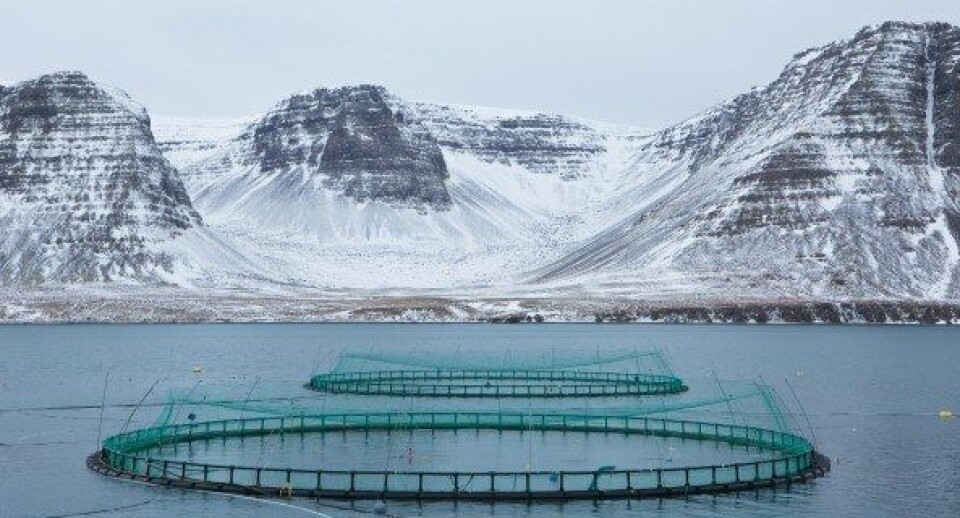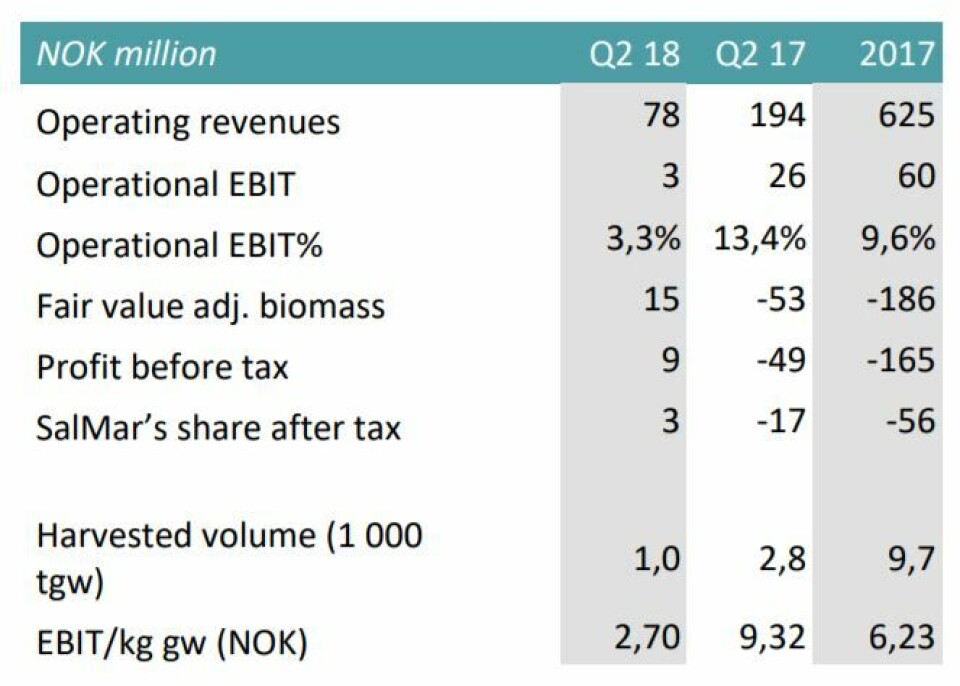
Arnarlax results affected by high mortality
Icelandic salmon farmer Arnarlax has suffered high fish mortality which has impacted its results for the second quarter of 2018. Arnarlax also harvested lower volumes and experienced high underlying costs.

Arnarlax harvested around 1,000 tonnes in Q2 2018, compared to 2,800 tonnes in the same period the year before. Total operating income for the quarter was NOK78.2 million (£7.2m), compared to NOK193.8m (£17.9m) in the corresponding period last year.
The result for the period was negatively affected by high mortality, high underlying costs of harvested biomass in addition to high fixed unit costs due to low slaughter volume, part-owner SalMar said in its Q2 report recently.
Operating profit for the period was NOK2.6m, just a tenth of the operational in Q2 2017. EBIT per kilo was NOK2.70 (NOK9.32 Q2 2017).
Quality of smolts
Although disappointing compared to Q2 2017, the result is an improvement on the first quarter of this year, when Arnarlax reported a loss of NOK40.2m (£3.7m) due to high fish mortality caused by both unusually cold water temperatures and relocation of fish when a cage was damaged in a storm.

Arnarlax chairman Kjartan Ólafsson said that in order to reduce production costs the company will have increased focus on cost structure and quality of its smolts.
“The development of salmon farming is still at an early stage in Iceland,” said Ólafsson. “2017 was the first year with 12 months’ harvesting for Arnarlax. There are many challenges ahead that we look forward to working through. In general, we are optimistic about operations in the second half of this year and next year.”
The company expects to harvest 6,700 tonnes in 2018, a drop of 3,000 tonnes compared to 2017.
In order to realise further growth for the company, there has been a need to strengthen the company’s capital base. After the close of Q2, Arnarlax has therefore undertaken a cash issue to raise NOK200m. Following this issue, SalMar has an indirect holding in the company of 41.95%.























































